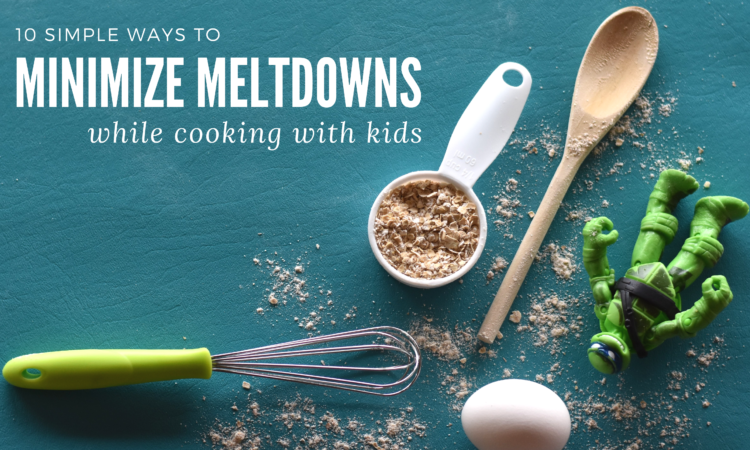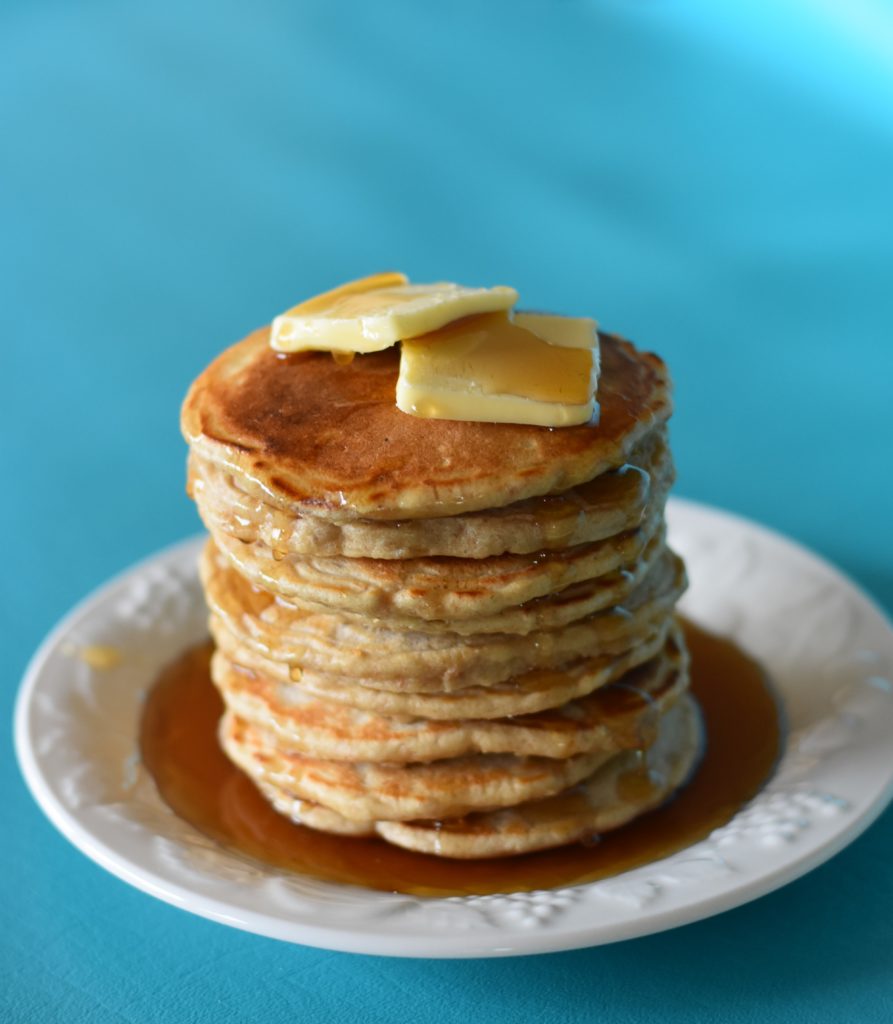“Anyone know how to cook with kids and not have every one of us have a meltdown?! 😩👩🏼🍳😭”
When I first started trying to cook with my kids it did not go well. It was a high stress situation for everyone involved. There were meltdowns, I yelled, the kids cried, and I struggled. Seeing this FB post prompted me to synthesize everything I’ve learned through trial and error this past year. I didn’t give up cooking with my kids. Instead I made changes so that it would go a bit smoother. There have definitely been kinks to work out; we have had good moments, okay moments, and horrible moments. We have had kitchen injuries and accidents. But it has improved! So there is hope!
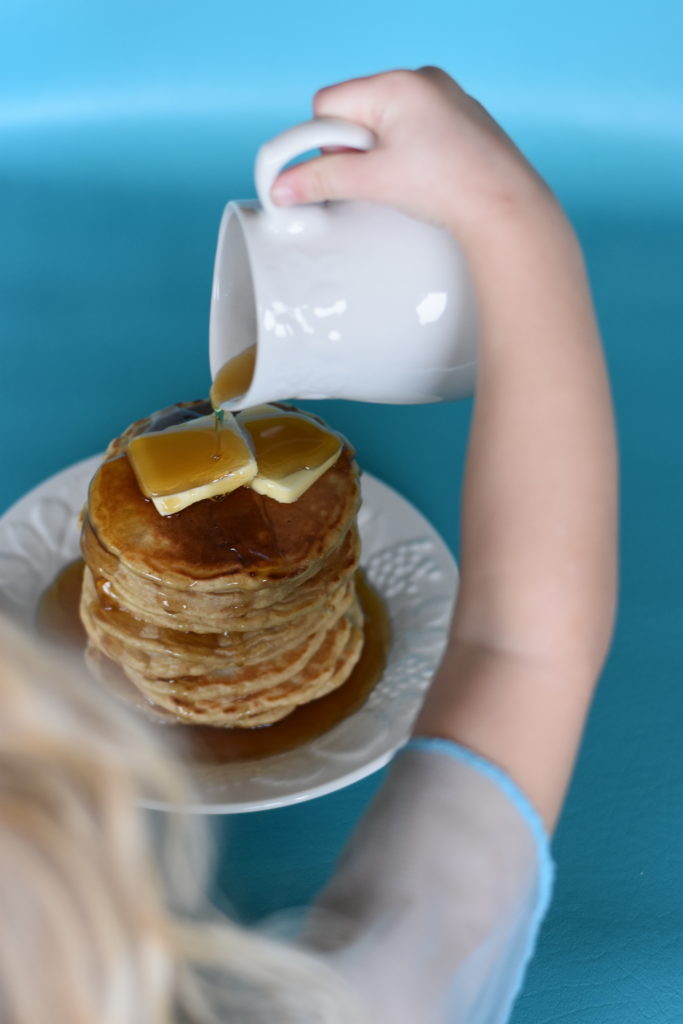
Important side note: I DO THIS BECAUSE I WANT TO! I love cooking so I want to share this love with my children. If cooking is your least favorite thing in the world, and the thought of cooking with your kids sounds like torture, that’s more than okay!
The last thing I would want is for you to feel guilty for not cooking with your kids. This is a completely optional activity that will add to your stress and the mess of being a mother, parent, caregiver or household manager, so I only want you to do it if YOU want to. If cooking and baking is not your thing, never feel bad for not incorporating your children into the kitchen! Just last night I told my kids to leave the kitchen while I made dinner, and I’d call them when it was ready. That’s our most of the time over here right now. It’s okay to say no.
These steps work well in our household. I think that if the same general principles are followed, adapted to your own circumstances and your kids ages, you will find success.
1. CHANGE YOUR STRATEGY
I’ve learned that if you want to cook with your kids, you can no longer do exactly what you used to do when you were cooking by yourself. Having kids involved introduces a whole new variable.
Acknowledge you need to do things differently
Exactly how is going to differ from parent to parent, and child to child, but the first step is to be ready to change it up. Here are some ways I have changed my strategy, and minimized meltdowns in the kitchen.
2. PLAN AHEAD
Decide ahead of time to incorporate the kids
Right now on Fridays we always make pancakes, and I plan to let the kids help, because we have time. I find if I incorporate the kids in the cooking on a whim it is more likely to be a bust. Make sure you have time to incorporate the kids, and aren’t rushed to eat or head out the door when you start.
Meal plan and grocery shop ahead of time
I always have the ingredients on hand to make pancakes. Make sure you have planned ahead to have the ingredients you need, so you don’t start into it and have to stop or run to the store halfway through. One good time to plan this into your week is if/when you meal plan – look at your week and what kinds of food you’ll be making, pick something simple that you’re making on a low key day, and get everything you’ll need on your grocery run.
Pick a simple recipe, that doesn’t require perfection
When you are selecting a recipe to make with your kids, pick something that is simple, that isn’t difficult to execute or require a ton of dexterity or fine motor skills. Also pick something that isn’t finicky and requires super exact measurements to get right. Pancakes are really forgiving this way. If some of the flour or milk doesn’t quite make it into the bowl, they still taste good!
And if for example you are making a treat for an event and you want it to turn out beautiful, decide not to have the kids help. Sometimes I ask myself this question “What is my goal for this cooking project?” and if it is to get perfect or impressive results, then kids helping is just going to stress me out. And if you are like me and you LOVE to cook and bake, you should schedule time to do it just for fun, on your own.
3. HELPING IS A PRIVILEGE
Explain to your kids that helping make the meal is a privilege, not an expectation. In my experience kids find helping cook really fun, but it adds to your stress as a parent. So I emphasize to my kids that if they stop listening to instructions and complying with my requests they can no longer be helpers. This can be as simple as saying “Everyone who listens to mom gets to be a helper!”.
Use it as an incentive
You could even use this as a little incentive for your kids to do something you want them to, for example “Everyone who cleans up their toys can help make dinner!” and motivate behavior that you want to see. This doesn’t always work like a charm, especially with my 3 year old, but it usually works great with my 4 year old.
4. EXPECT A MESS
Tell yourself 10 times “THIS IS GOING TO BE MESSY”! No matter how prepared I am little kids spill and make messes – way more than I would while cooking. If I embrace that as a fact, and accept that my kitchen/counter/floor will be covered in milk, flour and batter, then I don’t freak out when it actually happens.
Have a non emotional response ready for spills
Mine is “Oops! Let’s clean up the spill!”, and I say it in a positive tone, so my kiddo doesn’t feel horrible for making “mistakes” while cooking. You want this to be a positive experience, and if you shame the kids for being clumsy (when that is just a part of who they are as toddlers), it will create negative memories instead of positive ones. I try to emphasize “Everyone spills sometimes!” because that’s true!
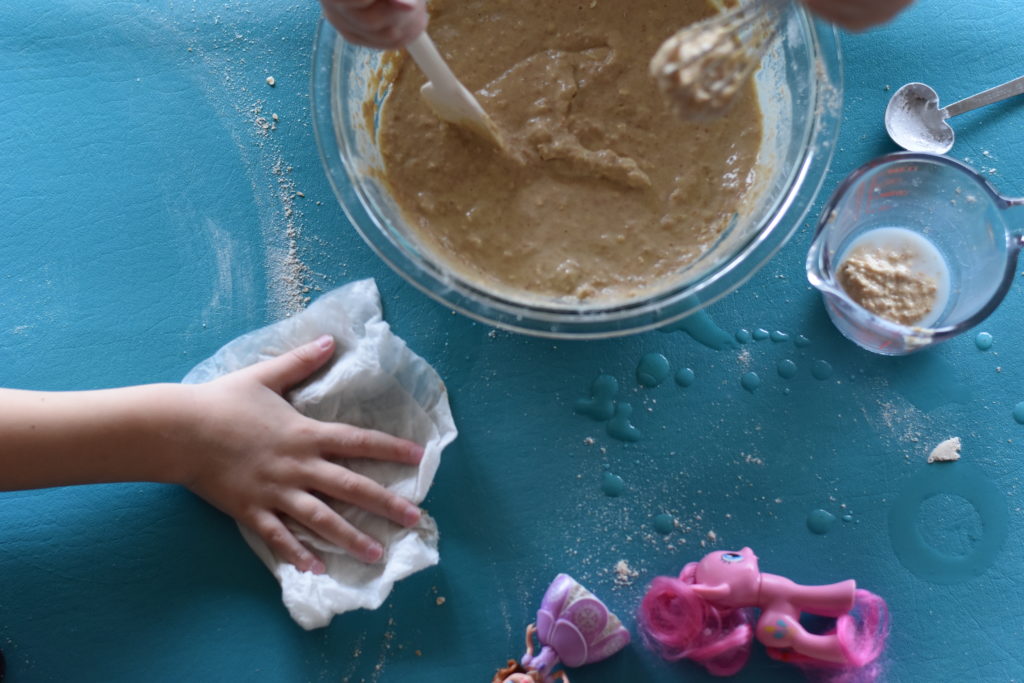
5. ESTABLISH SAFE COOKING STATIONS
Make this a safe place where your child can sit or stand and reach easily, and have the counter in front of them completely clean and clear of clutter. I especially make sure no knives or hot griddles are within reach. Handing your child the appropriate equipment and ingredients at the proper time in the recipe will prevent them from throwing things or making unnecessary messes, and you from stressing out while you’re trying to get started.
6. ALL INGREDIENTS OUT OF REACH
When I start to cook, I get out all the ingredients, and put them out of reach of the kids, but within my reach. I just take everything out of the pantry and put it in front of me. I am standing in the kitchen and the kids are sitting at the bar, which is on a higher level.
If they can reach it, they will touch it!
Kids have no concept for the order of the recipe and steps and instructions – they are just excited to dive in! And then you will be dealing with saying “No!”, “Not yet!”, “Wait!” over and over again while you become exasperated.
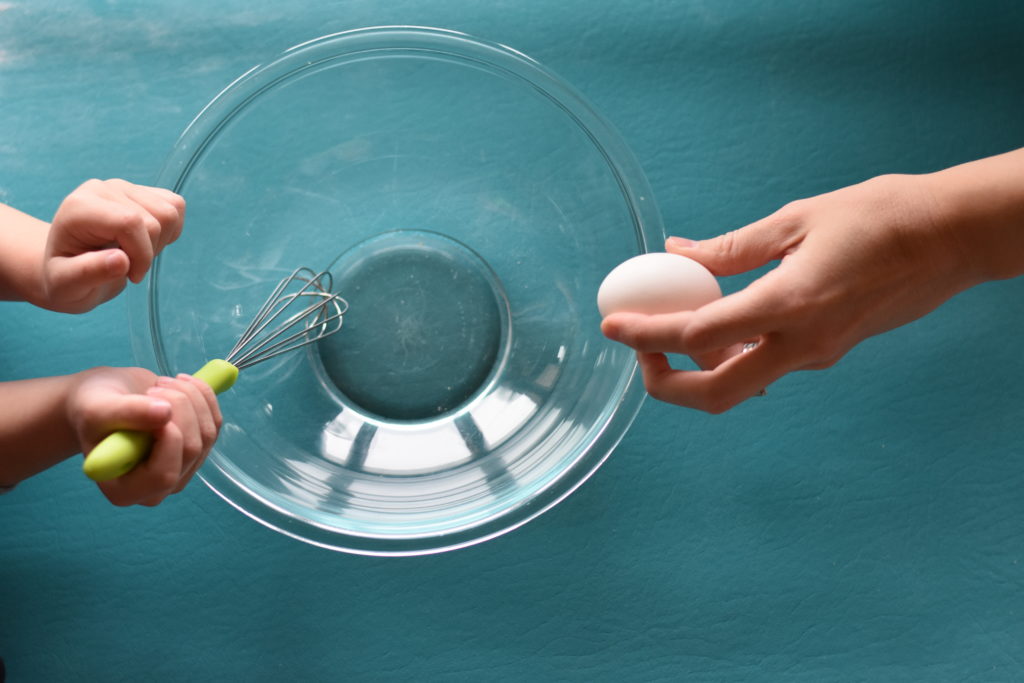
If all the ingredients are out of reach, you no longer have this fight – you are in control of when the ingredients are added and when the kids get to use them.
7. ESTABLISH ROLES
Depending on your kids age, ability, and the recipe, you can assign roles. When I am cooking there are always 2 kids involved so I have 2 roles in each recipe. For pancakes you need a “mixer” and a “dumper” if you have two kids cooking. The mixer gets the fork or whisk, and the bowl goes in between them. Now based on these roles the kids know exactly what they will be doing. There is no fighting over who gets to pour the milk into the bowl (and every other little task!).
In the pancake example, the mixer will get to whisk the eggs together, then wait until all the other ingredients are added, and then mix again at the end for as long as they want to. The dumper gets to dump all the ingredients into the bowl (except the eggs – at this stage, I crack the eggs directly into the bowl).
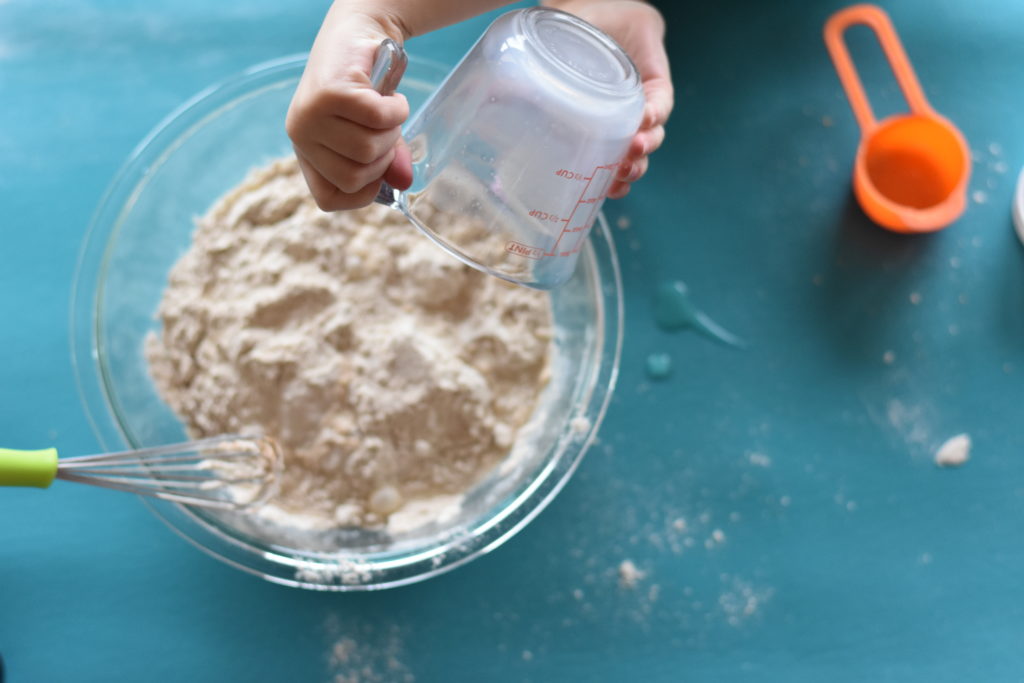
This has been key to minimize fights and whining during the cooking process. Once the roles are assigned it is (usually) smooth sailing.
Check out this list of 20+ simple toddler kitchen tasks.
8.BE CONSISTENT
I think a big reason why this works, and why we can make pancakes now usually without major mishaps, meltdowns, crying or yelling, is because I consistently follow this outline every time I make pancakes. So the kids know what to expect, and they know their jobs and have become really good at them!
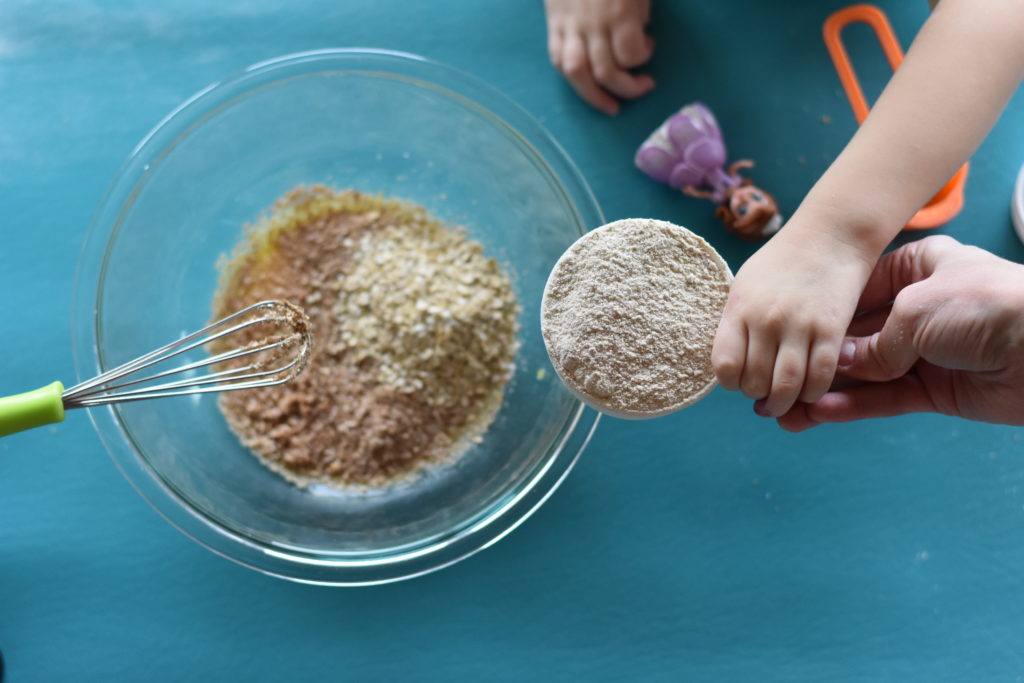
PLAY-BY-PLAY PANCAKE WORKFLOW
- I crack the eggs into the bowl and throw away the shells.
- Mixer whisks the eggs.
- Ask the mixer to PAUSE until the rest of the ingredients are in.
- Move the bowl directly in front of the dumper.
- I measure out each ingredient one at a time, and hand it to the dumper. He dumps them in.
- Move the bowl back in front of the mixer. Ask her to mix it together until it’s smooth.
- I put away the ingredients, turn on the skillet, and clear off the counter, while the mixer is mixing.
- Dumper gets to wipe up any spills near their station, and maybe set the table at this point by getting plates and forks.
- Whenever the mixer decides she is done, I take over. I finish mixing. She usually loses her attention span before it’s all combined.
- Now I ask the kids “What are you going to do now?” as their cue to go play until breakfast is ready to eat. They can chose to sit at their spot and wait or leave and go play.
- I make the pancakes and put them in a big stack until we’re ready to eat.
9. HAVE A CUE FOR THE END
Because cooking is such an engaging and exciting experience, it can be emotional for the kids when it’s over. They want to keep helping! So when they are done with their portion of the recipe I give them this cue:
“What are you going to do now?”
They can choose to get up and play, or they can choose to sit at their station and watch until the meal is ready. I also find this phrase comes in handy when we come to the end of other fun things at home, like screen time.
10. BE A CHEERLEADER
Last, but most important! If you want to encourage cooking and being involved in the kitchen, you want your kids to feel good about their work.
Praise your kids cooking efforts!
Tell them they are doing a great job when they stir the bowl. Express excitement for the way they pour the flour into the bowl! Phrases like “I love how you helped wipe up that spill!” or “Way to go getting the towel all by yourself!” or “You worked really hard to mix that pancake batter – it looks great!” or “You did such a wonderful job getting most of the flour in the bowl!” will reinforce that they are doing their job well, and make them want to keep cooking.
Avoid put downs or threats
You never ever want to shame your young child for spilling or missing the bowl or being clumsy. This is very normal and not a reflection of who they are – it is a part of the learning experience. So avoid saying anything like “Look at that horrible mess you made – you are so clumsy!” or “If you spill one more time, you won’t be able to help in the kitchen ever again”. I’ve been learning how much more powerful POSITIVE reinforcement is for encouraging behavior, by building your child up when you see good behavior, instead of threatening when you are disappointed or they make a mistake.
Stay safe – and go follow @simplyonpurpose
Let’s make our kitchens a safe zone to be with our children, a place they want to come back to, a place they feel loved and happy. Not only that, but stay a safe parent. Be a parent who kids will talk to and want to share things with and be around. I love this concept. I’m so grateful that I found Ralphie @simplyonpurpose – following her on Instagram has been a huge game changer. Her stories are my daily parenting inspiration – like my shoulder angel for parenting – reminding me to stay safe by not yelling and threatening my kids – and instead to promote behavior by using praise and positivity. Her concepts work really well applied to any area of parenting, in the kitchen or out!
That’s a wrap!
Here’s our pancake stack when we were done… I absolutely love these pancakes. They are healthy, full of fiber, and taste delicious with maple syrup or raspberry jam on top. Click the picture for my recipe!
I’m excited to hear what you think about this advice. Would any of these ideas work in your household? What are you going to do differently?? I’d absolutely love to hear about your success stories, and challenges, cooking with your kids!


